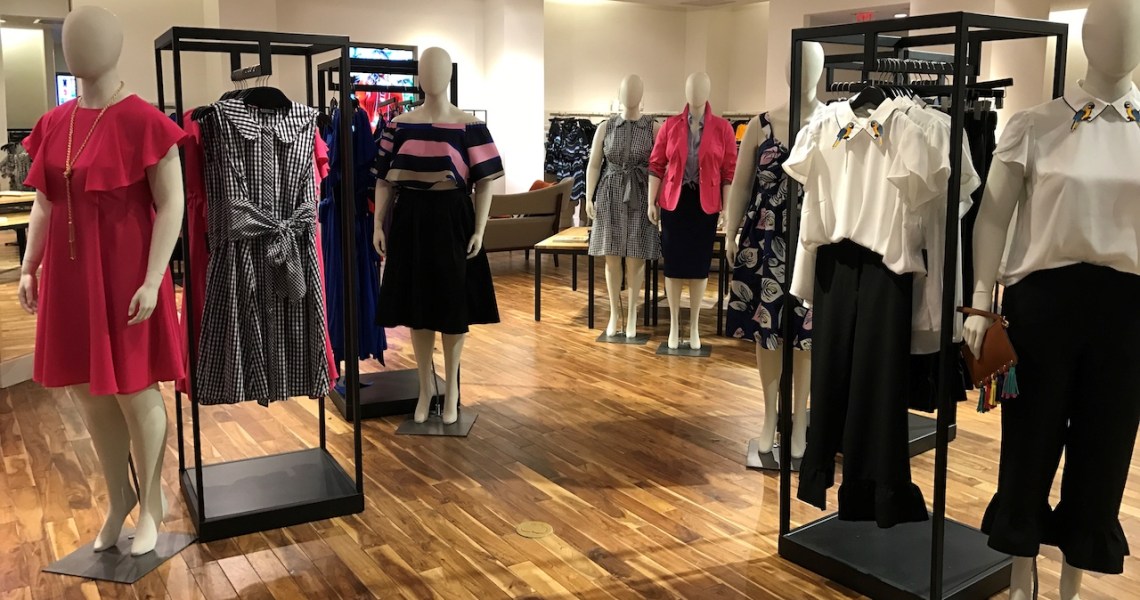Branded pop-up shops may have seemed like a passing trend, but fashion brands are still using these temporary stores year-round to win over new customers and drive sales. Last year, Louis Vuitton hosted 80 pop-ups, and it will host another 100 in 2019, while pop-up rental space company Appear Here reported a 300% lift in demand from brands for these temporary spaces in 2018.
But while the pop-up shop continues to be a go-to strategy for brands, especially direct-to-consumer companies with no physical retail footprint, they come with their difficulties. For those that are successful, the long lines to get inside and make a purchase can deter customers. That, coupled with the rise in the likes of Amazon Go, cashier-less convenience stores popping up around the country, and it makes perfect sense that pop-up stores get the cashier-less treatment.
A rise in pop-ups and a need for frictionless payments sparked Kathryn Lasater, CEO of Codabar, to build an app designed to make the payments in pop-ups simple. With Codabar, shoppers scan products they want to buy (after the pop-up staff first gets them to downloaded the app), pay for those items on their phone and then leave the store without handing over their credit card to a real person.
Codabar launches Wednesday, in tandem with a four-day pop-up event in San Francisco. The pop-up will be filled with products from 15 retail partners, many of which have little to no footprint in the Bay Area. Lasater hopes her super-curated pop-up shop can help bring some awareness to some of these smaller-scale retailers, including custom straw accessories brand Bom Bom Morocco, statement earring brand Bibi Mirani and handcrafted women’s contemporary line D’Ascoli.
“Pop-ups are such an interesting retail strategy right now. A pop-up is a great way to think outside the box and test out potential new markets, or test new products on a group of consumers,” said Aerin Lauder, founder and creative director of global lifestyle brand Aerin. Lauder’s brand will be among the participants at the app’s launch event, curated by Codabar’s Lasater.
“This app is going to make people shop in a different way, and they aren’t going to be focused as much on how they pay for things. It’s a more immediate way of shopping. It will be interesting to see how it impacts the consumer,” Lauder said.
To date, Aerin has hosted several pop-ups, including its most recent one-month stint with Estée Lauder, located at Melrose Place. “It was a huge success, and it was an interesting way to test a market and test a product,” Lauder said.
Ad position: web_incontent_pos1
Pop-ups will be the main focus for Codabar for the time being, as Lasater sees them as big opportunities for retailers of any size to convert. “Pop-ups give people a reason to go out and shop. They’re only around temporarily, and shoppers feel like they need to go or they’ll have FOMO,” she said. “And from the retailer side, it’s a great way for them to touch their customer without that overhead of a physical retail space.”
Lasater previously tested the app and the mobile checkout process over this most recent holiday season, with a two-day pop-up in San Francisco featuring nine retailers selling everything from Christmas ornaments to scarves to books. Over that two-day period, she said the app processed $43,000, made up from 202 unique checkouts in the 1,000-square-foot space. The pop-up, Lasater said, was advertised solely through posts on her personal Instagram page.
While Codabar is launching with a small group of retailers, Lasater said she’s already heard from a number of other companies interested in using Codabar in the future. Codabar’s major focus following this launch will be to build an open API so retailers using any kind of point of sale system, from Shopify to Square, can use her technology.




